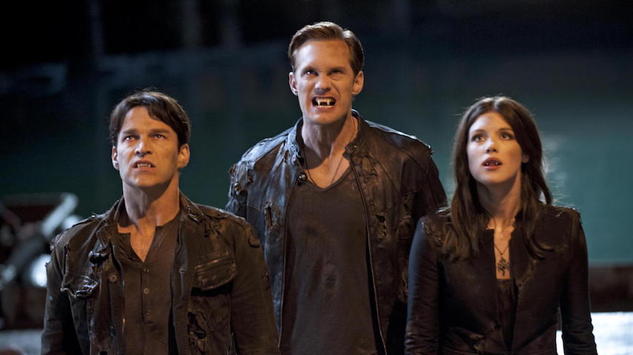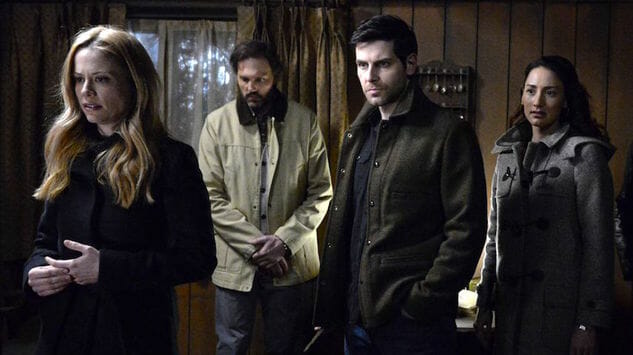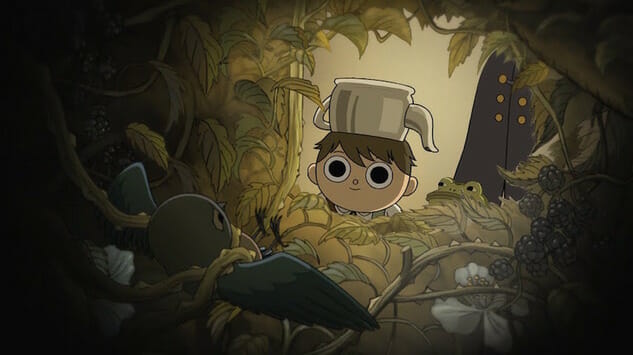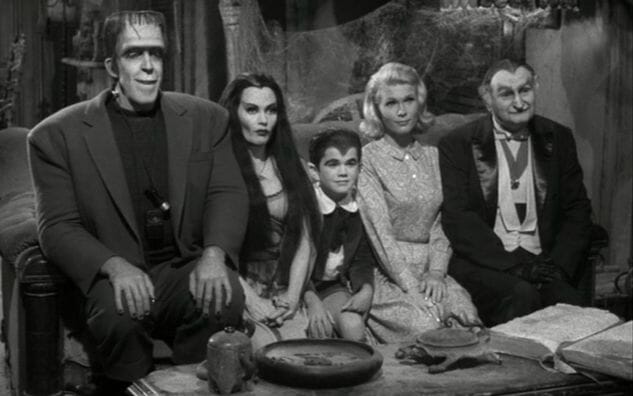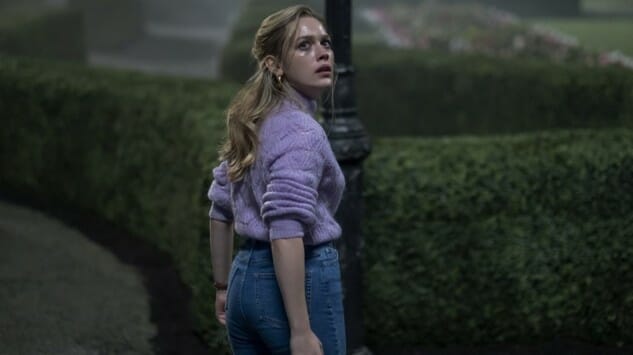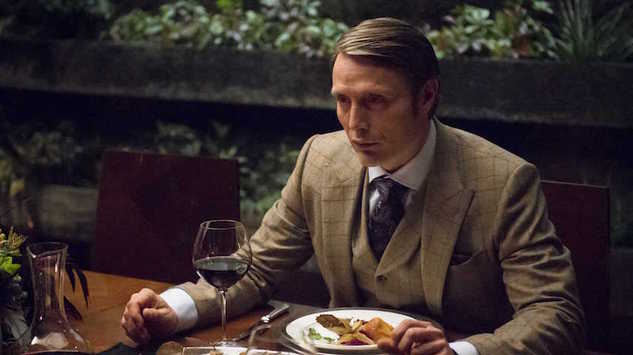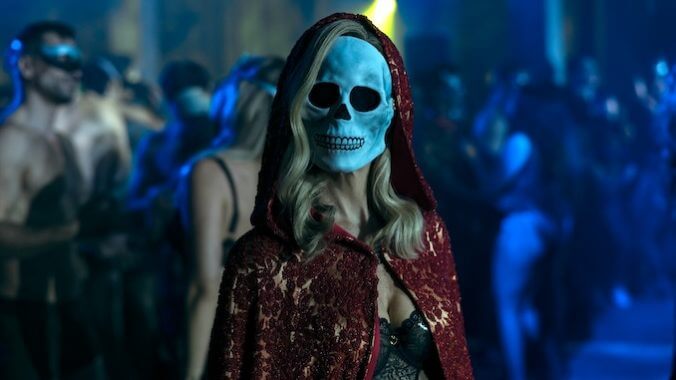
Ready to get spooky? Below we celebrate some of the best horror TV series you can stream right now (well, as far as current licensing deals are concerned). Some picks are scary, some aren’t, and some stretch the very limit of what’s considered horror. That means, hopefully, there’s a little something for everybody—even the scaredy cats.
But for those who want 24/7 scares, which streaming service is king? Shudder is the only streaming service totally devoted to horror, but all of the majors (Netflix, Hulu, Amazon) offer a very decent selection, as do Peacock, Max, and Paramount+. Thankfully, we’ve ranked all the major streamers by the quality of their horror movie libraries.
But now, we’re talking about TV. Check back soon for more updates, and pour one out for some classics that aren’t officially streaming anywhere right now, but might get added back in eventually, like Tales from the Crypt.
![]()
36. True Blood
Created by: Alan Ball
Stars: Anna Paquin, Stephen Moyer, Sam Trammell, Ryan Kwanten, Rutina Wesley, Nelsan Ellis, Alexander Skarsgård
Original Network: HBO
Alan Ball’s True Blood had terrible or great timing, depending on how you look at it. Released the same year as Stephanie Meyer’s much derided Twilight series, it’s a show that inevitably exists in the same breath as that other vampire craze. And while the popularity boom for wolves and vamps drew plenty of viewers thirsty for dense supernatural lore, it also did a great disservice to the weirdness of True Blood. Adapted from Charlaine Harris’ long-running “Southern Vampire” series, the show draws from a deep well of visual inspiration: from the erotically charged ghouls of Anne Rice, to the nightmarish imagery of Tony Scott’s The Hunger, to the supernatural camp of The Craft and Buffy the Vampire Slayer.
Over its seven radically uneven seasons, it was a hard show to love with its constantly webbing narratives, stop-start pacing, and sloppy characterization. (I’ve still never heard a good argument for Tara as a well-written character.) But, at the same time, it was an easy show to admire. Even in its most baffling moments, True Blood was a show that truly committed to its ideas, no matter how off-the-wall they could become. This was a show that, all the way back in Season 1, was reveling in gory vampire orgies that make American Horror Story look tame. And the show only escalated in ridiculousness. There were whole seasons based on allegories of bigotry, arcane dynasties that were generations-old, and a developing world of pulpy horror staples. It didn’t always make sense and it wasn’t always satisfying, but it felt startlingly singular at times. —Michael Syndel
35. A Haunting/Scariest Places on Earth/Unsolved Mysteries
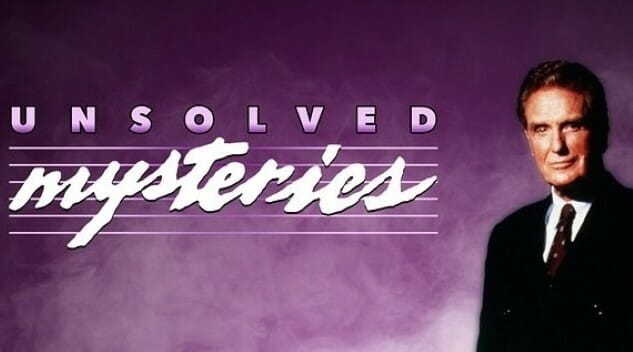
These are three entirely separate shows, but we include them here as a combined entry on the style of show that might be referred to as “paranormal documentary,” “reality horror” or simply “spooky TV.” Note: We’re not talking about the BS genre of ghost-hunting faux documentary-style shows, as characterized by the eponymous Ghost Hunters or Ghost Adventures. Programs such as A Haunting or even certain segments of Unsolved Mysteries don’t purport to FIND any ghosts, but only describe the stories of real-life people who claim to have experienced these phenomena, via terrifying reenactments. Scariest Places on Earth you might remember as the series hosted by The Exorcist’s Linda Blair, who would narrate the features of various haunted asylums and prisons like they were celebrity pads on Lifestyles of the Rich and Famous. A Haunting, meanwhile, makes more of a genuine attempt at frightening the viewer than almost any other show on this list. Fright is truly its only purpose, and it’s damn effective at it. Although some of the reenactments come off as silly, plenty of A Haunting segments are chock full of high-grade nightmare fuel that would send children crying out of the room, just as effectively as that terrifying Unsolved Mysteries theme music. —Jim Vorel
34. Chilling Adventures of Sabrina
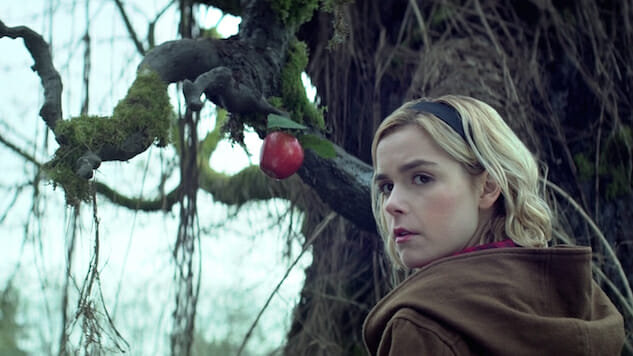
Created by: Roberto Aguirre-Sacasa
Stars: Kiernan Shipka, Ross Lynch, Lucy Davis, Chance Perdomo, Michelle Gomez
Network: Netflix
The Archie-adjacent teenage witch has had a bumpy ride, but Chilling Adventures still manages to scratch a very specific horror itch for fans of demonic magical metaphor. The show’s attempts at feminism veer from the brutally satisfying to the lip-service-only frustrating, but weaving that driving principle throughout the show’s coming-of-age plots and the underground magical societies within which they take place only binds the show closer into a more cohesive, if imperfect, entity. Kiernan Shipka, taking all that she earned from Mad Men, dominates the screen while snipping and snapping with each potent line delivery. A plethora of romantic angles supplement the show with its more Riverdale-like elements, but at its heart, Sabrina is a horror show that only gets darker as its reign continues. —Jacob Oller
33. Alfred Hitchock Presents
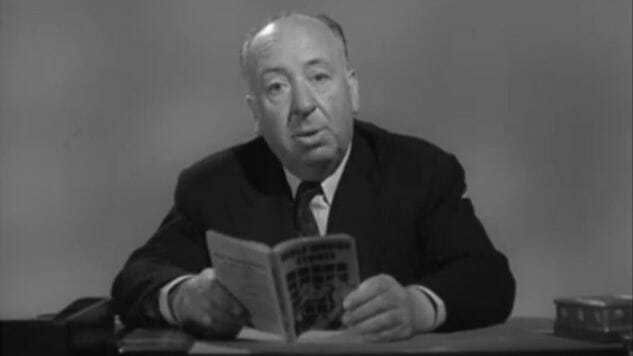
Created by: Alfred Hitchcock
Stars: Alfred Hitchcock, Harry Tyler, John Williams
Original Networks: CBS, NBC
It may be a little bit of a stretch to truly call Alfred Hitchcock Presents “horror,” as it were, but it was definitely high drama in the style created by the master of suspense. Hitchcock, of course, knew true horror, whether via The Birds or Psycho, and threads of these films, along with thrillers such as Notorious or North by Northwest, are woven into the long-running show’s DNA. Take the ultra-macabre episode “Man from the South,” starring horror icon Peter Lorre as an insidious old man with a truly nasty proposition for a young gambler played by Steve McQueen. Lorre’s character promises to give McQueen his Cadillac … if McQueen can successfully strike his Zippo lighter 10 times in a row. If he fails? Then Lorre will cut off McQueen’s finger as punishment. It’s a sadistic, weird premise that has since been adapted again multiple times, including by Quentin Tarantino in 1995’s Four Rooms, but none of them can touch Hitchcock. —Jim Vorel
32. Grimm
Created by: Stephen Carpenter, Jim Kouf, David Greenwalt
Stars: David Giuntoli, Russell Hornsby, Bitsie Tulloch, Jacqueline Toboni, Silas Weir Mitchell, Claire Coffee
Original Network: NBC
Like any good show, NBC’s Grimm is greater than the sum of its parts. The personal, familial, and workplace dramas that make up the world inhabited by homicide detective/hunter of supernatural creatures Nick Burkhardt is plenty to keep you entertained. Throw in the monsters—inspired by characters from Grimms’ Fairy Tales—and you’ve got a compulsively watchable show. But let’s talk about these monsters for a minute, because these are a special brand of beast that will haunt your dreams. Between some terrifying wesen, completely unpredictable witches, mermaids that really work against the whole “mermaids are sexy” movement, and other such things, this show is not for the faint of heart. Many of the monsters also have a fascinating (but horrifying) cultural bent, like the aswang—mythical Filipino beasts that attack pregnant women (because their amniotic fluid is so incredibly delicious). Good times, good times. Beyond the horrors, Grimm is one of those rare shows that makes Hollywood’s inclusivity problem look even more inexcusable. With a truly diverse cast, playing on both good guy and bad guy sides, and complex roles for the female characters (my personal favorite being Claire Coffee’s Adalind), the show may not come up in conversations about the recent Golden Age of TV, but it’s probably one of the best shows you’re not watching. —Shannon M. Houston
31. Over the Garden Wall
Created by: Patrick McHale
Voice Stars: Elijah Wood, Collin Dean, Melanie Lynskey, Christopher Lloyd
Original Network: Cartoon Network
Patrick McHale’s Cartoon Network miniseries Over the Garden Wall feels ripped out of a previous decade (to say which, exactly, is a bit of a spoiler), and its creepiness is incidental yet pervasive in the way that only old-timey artifacts often achieve. Two half-brothers, Wirt (Elijah Wood) and Greg (Collin Dean), follow a bluebird named Beatrice (Melanie Lynskey) through the Unknown, an increasingly disorienting realm inspired by vintage Americana and haunted by The Beast (Samuel Ramey), a terrifying figure seen only in short glimpses throughout the show. For all of its charms, the Unknown operates on its own nightmare logic, and Wirt, the stuffier brother (voiced to anxious perfection by Wood), wants little to do with its demon-possessed house girls or living pumpkin towns. The emissaries of The Beast, beginning with a rabid, wide-eyed hell-wolf in the first episode, are not at all toned down for the show’s ostensibly young audience, and the twist revealed in the final two episodes is much heavier than one would expect to see on Cartoon Network. If you wrote off Over the Garden Wall as just another manic children’s comedy, think again—and consider watching with the lights on. —Steve Foxe
30. The Originals
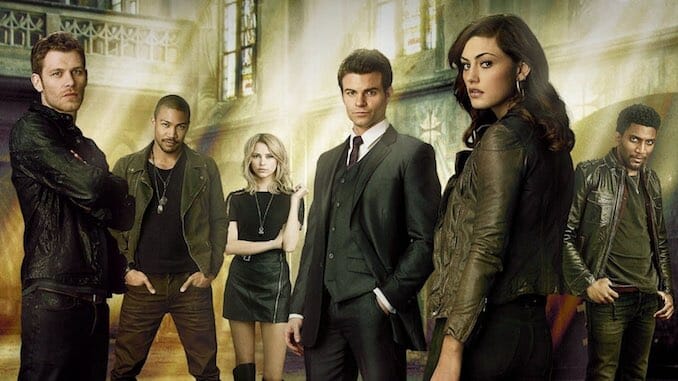
Created by: Kevin Williamson, Julie Plec
Stars: Joseph Morgan, Daniel Gillies, Phoebe Tonkin, Claire Holt, Charles Michael Davis, Danielle Campbell, Leah Pipes
Original Network: The CW
Watch on Amazon (Free with Ads)
The Originals is actually a case in which the child exceeded the achievements of the parent. It launched with fully-formed characters (with a mythology established by parent show The Vampire Diaries) and was unfettered by geometry class or the constraints of a small town. Klaus Mikaelson (Joseph Morgan) was easily one of the most complex anti-heroes on TV, and creator Julie Plec was unafraid to poke around in the heads of any character—even killing a few. Also, as dark and disturbing as The Vampire Diaries could be (and it got even more so as the characters aged), The Originals blew it out of the water. Plec expanded on the world she helped create, giving her characters more room to grow emotionally and significantly more intricate challenges to face. The politics of The Originals became just as fascinating as the supernatural elements, and the show felt more fully-formed than The Vampire Diaries did early on. It didn’t hurt that New Orleans is decidedly more fun to explore than an imaginary small town in Virginia. —Mark Rabinowitz
29. American Horror Story

Created by: Ryan Murphy, Brad Falchuk
Stars: Evan Peters, Sarah Paulson, Jessica Lange, Denis O’Hare, Kathy Bates, Angela Bassett, Lily Rabe, Frances Conroy, Cheyenne Jackson, Emma Roberts, Taissa Farmiga
Original Network: FX
Even fervent fans of Ryan Murphy’s high-camp horror anthology American Horror Story would have a tough time defending its latter seasons. But the first three story arcs, known as Murder House, Asylum and Coven, pushed the bounds of scary storytelling on television and helped kick off a small-screen horror renaissance—as well as the anthology series explosion—when AHS first debuted around Halloween 2011. AHS’s evolution from a genuinely terrifying first season starring Connie Britton to the gore-porn fifth season that earned Lady Gaga a Golden Globe mirrors just about every major horror film franchise: a shockingly strong start, followed by unexpected space shenanigans, complicated continuity callbacks, distracting guest stars, openly humorous installments, and the departure of key players (most notably Jessica Lange, Murphy’s muse for the second, third, and fourth seasons after her supporting turn in the first). This murderous medley of elements clutters the show, but can’t suppress the glee that a horror hound feels seeing so many well-known genre tropes recycled and repurposed by Murphy and his rotating cast of players, from the chameleonic Sarah Paulson, to Misery’s Kathy Bates. American Horror Story may be a big, bloody mess, but it’s clearly in love with the genre in its title. —Steve Foxe
28. Devilman Crybaby
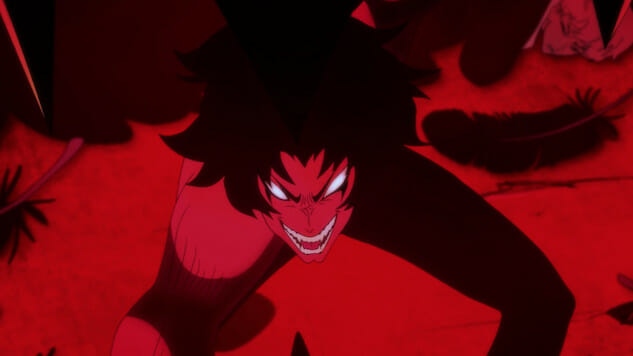
Written by: Ichiro Okouchi
Directed by: Masaaki Yuasa
Original Network: Netflix (U.S. license)
To put it lightly, Go Nagai is a man with a reputation. Aside from being one of the forefathers of the “Super Robo”’ subgenre of mecha for his creation Mazinger Z, he is also known for creating works that pushed taboos and prompted the anime industry’s shift from children-oriented fare to darker and more sexually-charged subject matter. Case in point: Devilman. Masaaki Yuasa’s contemporary reprise of Akira Fudo and Ryo Asuka’s “love” story is as orgiastically violent and unflinchingly risqué as Nagai’s original manga, a fitting tribute to both the creator’s oeuvre and the character’s storied legacy. Devilman’s influence can be seen everywhere from the Luciferian beauty of Berserk’s Griffith to the apocalyptic loneliness of Neon Genesis Evangelion. For all these reasons and more, Devilman Crybaby positions itself not only as one of the best series in recent memory, but one that will stand the test of time in the years to come. —Toussaint Egan
27. The Munsters
Created by: Allan Burns, Chris Hayward
Stars: Fred Gwynne, Yvonne De Carlo, Al Lewis, Beverley Owen, Pat Priest, Butch Patrick
Original Network: CBS
As Laurel and Hardy are to Charlie Chaplin, so too is The Munsters to The Addams Family. Television is filled with these kinds of analogs—NYPD Blue and Law and Order, The Wire and The Shield—but none of them are quite so perfect as TV’s sitcom horror families, who competed with each other for viewers for almost exactly the same number of years before they both went off the air in 1966. Which is the better series is, of course, the eternal question, one that will vex and bedevil you for all your days if you bother trying to answer it scientifically, so don’t bother; just go with the one that best suits your fancy. The Addams Family has The Munsters beat on sheer creativity and invention, but as a decidedly cartoony spoof of the 1960’s squeaky clean, family oriented content, The Munsters feels just a little craftier thanks to its normalization. They’re monsters, all, but damned if they realize it; for all they care, they’re the average American family unit, just as much as the Cleavers are. —Andy Crump
26. Supernatural
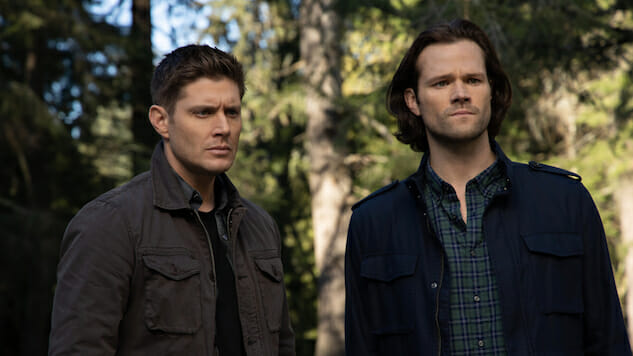
Created by: Eric Kripke
Stars: Jared Padalecki, Jensen Ackles, Misha Collins, Katie Cassidy, Lauren Cohan, Mark A. Sheppard, Mark Pellegrino, Alexander Calvert
Original Networks: The WB/The CW
It was no small thing for a show like Supernatural to keep on keeping on, after more than a decade spent giving all manner of monsters the what for. Consider that when The WB first aired the aberration-hunting adventures of the brothers Winchester—Dean (Jensen Ackles) and Sam (Jared Padalecki)—back in 2005, the network had added a slew of new titles to its ‘05-‘06 schedule, including Just Legal, Twins, Pepper Dennis, among many others. Consider as well that none of them stuck around for very long or made much of an impression. (You’re probably pulling up Wikipedia to find out what they’re each about as we speak.) But Supernatural? Supernatural endured. When the WB merged with UPN in 2006, Supernatural walked out of the Thunderdome. The “why” is obvious. Eric Kripke’s story of two brothers on a mission to protect the innocent from evil in all its sundry forms— ghosts, demons, vampires, werewolves, the occasional wendigo or djinn, zombies, you name it—maintained a terrific balancing act throughout each of its 15 seasons, blending enough humor, horror, and individual personality with well-tread genre tropes and plots to make it a standout from other programs of its kind. Some episodes lean more toward “funny.” Others lean in the direction of “scary.” Others still make you laugh and quake in fear at the same time. It’s no wonder, then, that the death of The WB wasn’t enough to stop the Winchesters from doing what they do. —Andy Crump
25. Castle Rock
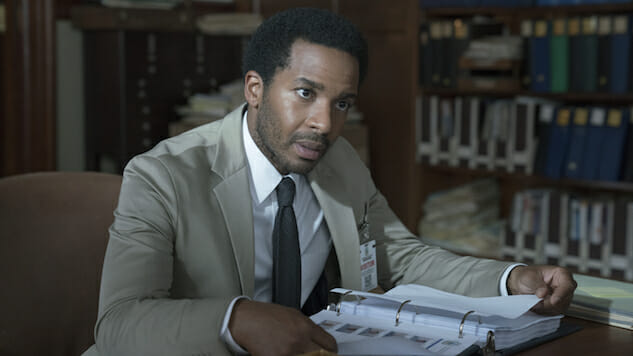
Created by: Sam Shaw, Dustin Thomason
Stars: André Holland, Melanie Lynskey, Bill Skarsgård, Jane Levy, Sissy Spacek
Original Network: Hulu
Castle Rock, inspired by the stories of Stephen King, is not a perfect piece of prestige TV. It has plenty of silly allusions and worn concepts that are, if not quite ham, at least ham-adjacent. Bacon, maybe. Ham but a little more crisp, a little tastier, a little worse for your health. For good and for ill, that’s where much of King’s work aims, and Castle Rock is nothing if not a winning offering to its idol. Fans will find exactly what they came for, while curious newcomers and King agnostics will find themselves enveloped by the self-assured mystery’s densely woven blanket. —Jacob Oller
24. Bates Motel

Created by: Carlton Cuse, Kerry Ehrin, Anthony Cipriano
Stars: Vera Farmiga, Freddie Highmore, Max Thieriot, Olivia Cooke, Nicola Peltz, Nestor Carbonell, Kenny Johnson
Original Network: A&E
Available for Purchase on Amazon Prime
When telling the origins of a horror icon, a fine line must be walked. For one, you run the risk of losing the mystery that made the original characters so terrifying to begin with. Bates Motel, however, creates a backstory for Norman Bates (Freddie Highmore) that makes the psycho of Psycho sympathetic. But Norman is always just a second away from behaving horrifically. Over the course of the show, Highmore goes from confused teenager to schizophrenic maniac, and in doing so, given a performance that rivals Anthony Perkins’ take on the character. Playing off this evolution is the incredible, hypnotic Vera Farmiga as his mother Norma. Of course, Norma’s story has to end tragically. But when watching mother and son together, there’s hope that the story will diverge from the way we know it must go, and there’s the constant fear that what we know must happen can occur at any point. By expanding on the Norman Bates story, Bates Motel has taken an iconic character and enriched him with a haunted history that makes him even more fascinating as we watch his descent into madness. —Ross Bonaime
23. Creepshow
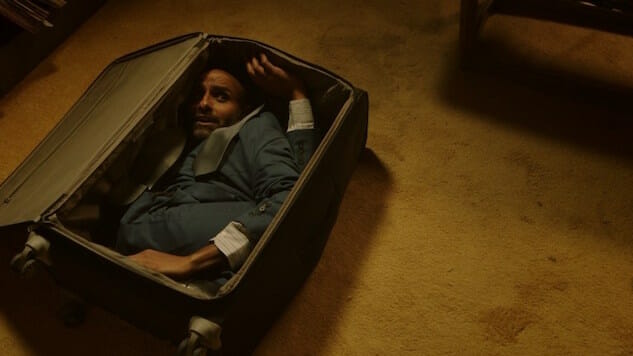
Produced by: Greg Nicotero
Original Network: Shudder
George A. Romero’s Creepshow, written by Stephen King, was formative alongside similar fare like Bordello of Blood. Now that the film anthology’s format and style has found a new home on Shudder, fans—be they longtime members of the cult or new converts seduced by the EC Comics spooky-fun vibe—will be doing the Danse Macabre “eek” to “eek.”
The first episode of Creepshow, “Gray Matter/The House of the Head,” starts with a comicky reintroduction of the Creep and doesn’t let up. With comic fidelity unseen outside of the MCU (whole pages, ads, and page-flipping transitions make their way on-screen) and Easter eggs enough to make King fans happier than a Mainer at a townie bar, Creepshow plays to audiences with the same storytelling strategies as superhero cinema. The original fans get their nostalgia, with the old masters well represented and throwback tones well mimicked, while the new inductees get enough modernity to Trojan Horse in the show’s addictive camp. —Jacob Oller
22. The Outer Limits (1963-1965)
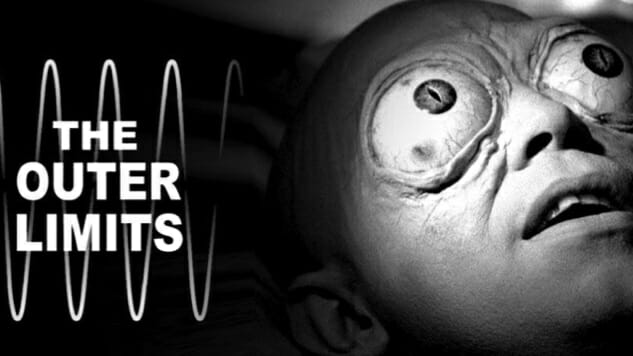
Created by: Leslie Stevens
Stars: László Benedek, Abner Biberman, John Brahm, John Erman
Original Network: ABC
In the realm of influential, early anthology shows, The Outer Limits is probably forever cursed to play second fiddle to the likes of The Twilight Zone. Yet, while the program’s 49 episodes may not always have the consistency or emotional wallop of Rod Serling’s masterpiece, its stories embraced an arguably more complex, morally relative worldview, whether that week’s installment was a monster-centric horror yarn or a Harlan Ellison-penned “hard” sci-fi joint. What’s more impressive is how, over half-a-century after the fact, some of the show’s super-cheap creature designs remain eerily unnerving, as evidenced by the human-faced insectoids at the center of “The Zanti Misfits” (don’t Google it, it will give you nightmares). On the larger scale, it’s fascinating to note how the show may have planted the ideas for future seminal works, whether it be “The Architects of Fear” for Alan Moore and Dave Gibbons’ Watchmen or “Demon with a Glass Hand” for The Terminator franchise (though James Cameron will legally dispute that). Each week, the opening title sequences promised that we were “about to participate in a great adventure.” More often than not, The Outer Limits kept this promise. —Mark Rozeman
21. The Fall of the House of Usher
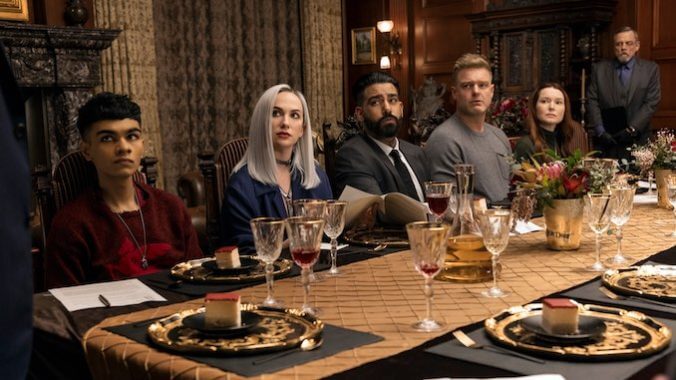
Created by: Mike Flanagan
Stars: Bruce Greenwood, Mary McDonnell, Carla Gugino, Kate Siegel, Henry Thomas, Zach Gilford, Carl Lumbly, Mark Hamill
Original Network: Netflix
No one else in this space is doing what Mike Flanagan does, mining our deepest emotional fears and unspoken desires for the sort of real-life nightmare fuel that’s much, much scarier than any monster under the bed. Through stories that wrestle with everything from questions of faith and belief to falling in love and what it means to truly die, Flanagan’s deeply human horror universe is truly something beautiful to behold.
Though The Fall of the House of Usher is primarily grounded in Edgar Allan Poe’s titular short story of the Usher siblings, Flanagan deftly mixes in elements from many of the author’s other famous works, including “The Tell-Tale Heart,” “The Raven,” “The Murders in the Rue Morgue,” “The Masque of the Red Death,” “The Black Cat,” and more. Episodes are freely littered with Poe references large and small, from character names to full-on poetry recitations, and the series’ larger story reflects the author’s lifelong fascination with themes of guilt, death, paranoia, obsession, and delusion. One part horror-tinged Succession knockoff and one part modern day morality play, The Fall of the House of Usher is both a darkly comedic excoriation of the uber-rich and a slow-moving emotional car crash that explores the dysfunction at the heart of a family that’s losing its members one by one. —Lacy Baugher Milas
20. Ash vs. Evil Dead
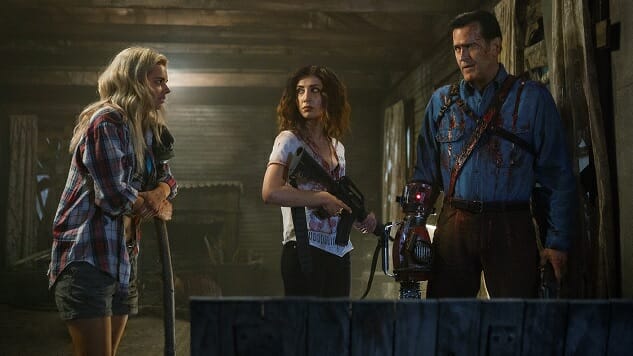
Created by: Sam Raimi, Ivan Raimi, Tom Spezialy
Stars: Bruce Campbell, Ray Santiago, Dana DeLorenzo, Jill Marie Jones, Michelle Hurd
Original Network: Starz
Look, Ash vs Evil Dead isn’t simply “a horror TV show.” It’s the TV show-sized version of one of horror’s greatest franchises, the point in time at which Sam Raimi became Sam Raimi, Bruce Campbell became Bruce Campbell, and all manner of genres in cinema, from horror to fantasy, gained a new well from which to draw influence. Evil Dead and its descendants are responsible for adding “groovy” and “boomstick” to the “Movies” section of the pop cultural lexicon. It’s the series that gave nerdy guys new heroes to claim as their own in Campbell and in Ash, the book-smart guy who’s as handy with a chemistry textbook as he is with a shotgun. Ash is a nerd, but a roguishly handsome nerd, well-endowed of chin, who can beat the crap out of Deadites, demons, and skeletons all day long. And that’s the essence of Ash vs Evil Dead, distilled into 20-45 minute chunks of pure, unfiltered monster ass-kicking goodness in which Ash doles out the harshness and, as is his wont, brings about the fucking apocalypse. (Good job, Ash.)
Boil the show down to a mere two-word descriptor, and that descriptor would be “arterial spray.” If you’re a gore junkie who needs to feed their habit like clockwork, Ash vs Evil Dead has your back. The show’s stars—not just Campbell, but the great sidekick team of Ray Santiago and Dana DeLorenzo—regularly run up on Deadites with deli slicers, chainsaws, hand cannons, you name it. And if you need to have your funny bone tickled, well, Ash and company have you covered there, too. It’s the perfect blend of unapologetic black humor and batshit violent insanity to get you your horror fix, week in and week out. —Andy Crump
19. Kolchak: The Night Stalker

Created by: Jeff Rice
Stars: Darren McGavin, Simon Oakland, Jack Grinnage, Ruth McDevitt
Original Network: ABC
Kolchak is one of the most influential horror TV shows to have been more or less forgotten today by a younger generation of TV viewers, but considering its short run on ABC in the mid-‘70s, this isn’t really surprising. Darren McGavin, he of A Christmas Story fame, starred in two TV movies directed by the great Richard Matheson as Kolchak, an investigative reporter for a small Chicago wire service who had an uncanny knack for getting himself mixed up in supernatural threats, while searching for a scoop. Along the way, he battles a rather ridiculous array of creatures in only 20 episodes: vampires, werewolves, mummies, zombies, aliens, androids—you name it, and Kolchak probably investigated it. Without the series, The X-Files would likely never have existed, and even series creator Chris Carter has said as much. McGavin would go on to appear in several X-Files episodes as a character named Arthur Dales, the “father of the X-Files department,” but in-the-know fans knew it was all in deference to Carl Kolchak. Combining the tropes of cop shows and procedurals with a twist of the fantastical and terrifying, Kolchak: The Night Stalker was something truly unique for its time, and it’s a shame that a poor time slot and unprepared audiences ultimately doomed it after only one season. —Jim Vorel
18. The Returned (Les Revenants)

Created by: Fabrice Gobert
Stars: Anne Cosigny, Frédéric Pierrot, Clotilde Hesme, Céline Sallette, Samir Guesmi, Guillaume Gouix
Original Networks: Sundance TV / Canal+
Based on a sublimely creepy 2004 film of the same name, Les Revenants hones its focus on one small town in France where a gaggle of formerly dead people return, alive and… mostly well. There’s no explanation for it, either. Instead, the living and the (very un-zombielike) undead (they eat sandwiches) are forced to try and figure out how to reckon with this strange turn of events, as well as the increasingly bizarre happenings that start occurring around town after the dead return. Creator Fabrice Gobert does the right thing with this adaptation by simultaneously narrowing its focus and expanding the ideas behind the story over the course of its two seasons. It opened up a world of possibilities, but he and his writers exercised remarkable restraint while also assuring viewers that they were going to see a story unlike any they had seen before. —Robert Ham
17. The Walking Dead
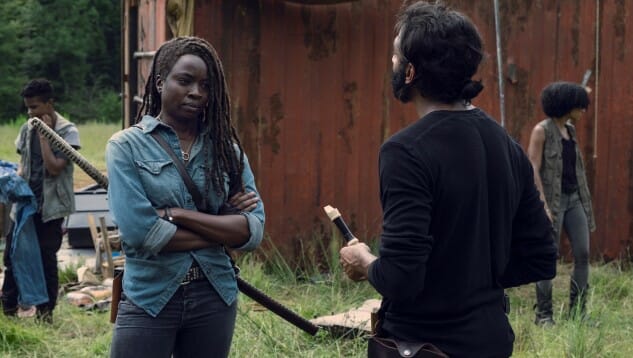
Created by: Frank Darabont
Stars: Andrew Lincoln, Jon Bernthal, Sarah Wayne Callies, Laurie Holden
Original Network: AMC
I remember excitedly watching the Frank Darabont-directed premiere of The Walking Dead on Halloween in 2010, thinking, “This is so cool, but it’ll never be popular.” An hour-long zombie drama? No one’s going to watch that but me! I couldn’t have been more wrong: Flying in the face of expectations, The Walking Dead became cable’s highest-rated series—even, on occasion, besting Sunday Night Football. Stop for a moment and consider the implications: We live in a country that has become so geeky, on average, that an hour-long zombie drama could sometimes get more viewership than Sunday Night Football. In terms of quality, the quest of the Grimes Gang to survive was up and down, but the production values were always impeccable. And although the story occasionally got bogged down in places, or was stretched too thin, the show often rebounded with a moment of incredible pathos, even for iconic villains such as David Morrissey’s Governor. Whether you like the increasingly messy latter seasons or not, The Walking Dead’s success has been massive for the marketability of horror on the small screen. —Jim Vorel
16. Black Mirror
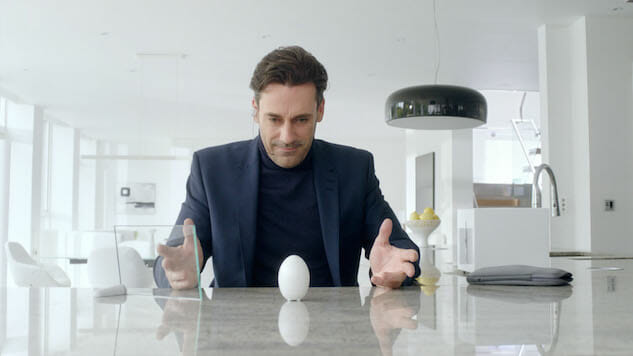
Created by: Charlie Brooker
Original Network: Channel 4 (UK)
There are probably times in most of our lives when we see our technological world as more of a dystopia than a utopia. The way it curbs our freedom, diminishes our privacy, and subjects us to anonymous attacks can feel like an unforgivable violation. But the worst part is, we’re complicit—we’ve accepted the intrusion, and in some cases, or even most cases, we’ve become addicted. The ubiquity of technology is a reality that we can’t fight against, and to maintain our sanity, we have to accept it. But that doesn’t mean it’s not worth questioning, which is exactly what Black Mirror is all about. The title is nearly perfect, as explained by creator Charlie Brooker: “The black mirror of the title is the one you’ll find on every wall, on every desk, in the palm of every hand: the cold, shiny screen of a TV, a monitor, a smartphone.” The job of this show is to reflect our society in an unflattering light, and they do it with a new cast and a new story in each episode. This is not fun watching—it’s mostly horrifying—but even if our brave new world is inescapable, the show represents a kind of protest that feels more necessary than ever. —Shane Ryan
15. The Haunting of Bly Manor
Created by: Mike Flanagan
Stars: Victoria Pedretti, Oliver Jackson-Cohen, Amelia Eve, T’Nia Miller, Rahul Kohli
Network: Netflix
When is a horror story not a horror story? When is a ghost not a ghost? If a ghost lives, breathes and walks among the living, can that really be called anything other than life? If a ghost feels every bit as much love, fear and regret as a living person, then isn’t life just as fraught with peril as death?
These are a few of the roughly 10,000 questions that Netflix’s The Haunting of Bly Manor would like you to roll around in your head during its nine-hour runtime, in which it adapts Henry James’ The Turn of the Screw but simultaneously finds time to go down every narrative rabbit hole you might find on a sprawling English manor’s property. The follow-up to Mike Flanagan’s The Haunting of Hill House is more unfocused than its predecessor, attempting to build an operatic narrative with detailed backstories for seemingly every character, but it possesses the same sort of devastating emotional intensity seen in the previous Netflix series. What it doesn’t have, though, is likely to disappoint a certain chunk of the audience (and thrill others): the scares.
In the end, what we have in Bly Manor is an epic, romantic gothic melodrama that isn’t interested in classical horror motifs like a struggle of good against evil. This is a deeply human story in which there’s no such thing as indiscriminate evil—only misunderstood and fractured people, both living and dead. Even the ghosts all become figures of sympathy and pity, as they’re revealed as products of misdirected human emotions such as rage, loneliness and loss, rather than the supernatural bogeymen we’re more familiar with. —Jim Vorel
14. What We Do in the Shadows
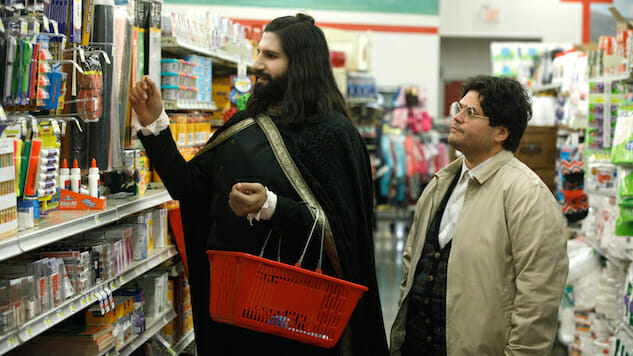
Created by: Jemaine Clement
Stars: Kayvan Novak, Matt Berry, Natasia Demetriou, Harvey Guillén, Mark Proksch
Original Network: FX
Based on the vampire mockumentary of the same name from Jemaine Clement and Taika Waititi, What We Do in the Shadows brings the sadsack bloodsuckers Stateside. The Staten Island roommates—vampires Nandor (Kayvan Novak), Laszlo (Matt Berry), and Nadja (Natasia Demetriou), as well as Nandor’s servant, Guillermo (Harvey Guillen)—are all ridiculous and slightly pathetic. The handheld camerawork is the deadpan punchline, with every shaky zoom in on a character during a confessional implying, “Can you believe this weirdo?”
More of the humor comes from the macabre wordplay and deadpan goofiness—often thanks to Berry’s stark, blustery delivery, straight from his BAFTA-winning Toast of London, and the exasperated looks it draws from Demetriou and Guillen—which are then punctuated by violent slapstick, featuring gallons of blood. In bringing the vampire-out-of-water conceit’s mix of comic elements down to the granular level, What We Do in the Shadows harkens back to the strongest parts of the film, which thrived on its charming re-imagining of dopey mythical creatures failing through the world in a way very particular to Kiwi… or, now, Staten Island. And with its documentary style taken just as seriously as its campy effects and extravagant costumes, the cretinous cosplay is beautifully straight-faced and completely winning—especially when the show goes to oxymoronic extremes of mundanity, like a city council meeting about zoning ordinances. —Jacob Oller
13. Stranger Things
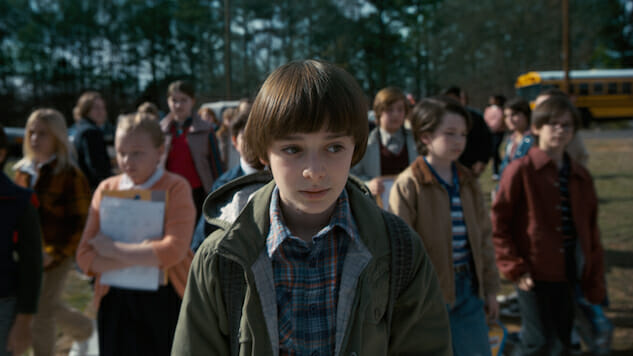
Created by: The Duffer Brothers
Stars: Winona Ryder, David Harbour, Finn Wolfhard, Millie Bobby Brown, Gaten Matarazzo, Caleb McLaughlin, Natalia Dyer, Charlie Heaton, Cara Buono, Matthew Modine
Original Network: Netflix
Say what you will about the finer points of its storytelling, Stranger Things continues to be an unabashed celebration of the 1980s, from its own filmic references regarding style and story to a cavalcade of literal references from the era. Its plucky set of kid and teen characters battle monsters (real or within themselves) and go to the mall. It’s a nostalgic dream and a creepfest nightmare. But whether it’s set during Halloween or in the throes of a mid-’80s summer, the show’s carefully crafted aesthetics always serve to augment the joyful nature of the series’ non-monster moments. And that, really, is where Stranger Things shines. The creep factor is important (and occasionally actually scary or super gory), but it acts as an almost funny juxtaposition to the otherwise happy-go-lucky look at suburban life. Mainly, though, it’s the friendships and coming-of-age stories, the relationships and family bonding, that really make Stranger Things great. For better or worse, the Netflix horror series is as tasty, messy, and fleeting as an ice cream cone on a hot summer’s day. Ahoy! —Allison Keene
12. Garth Marenghi’s Darkplace
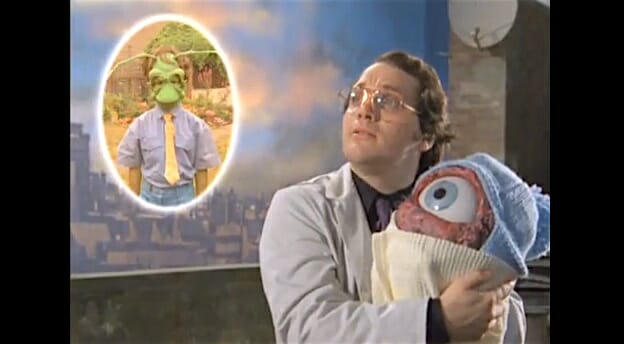
Created by: Richard Ayoade, Matthew Holness?Stars: Matthew Holness, Matt Berry, Richard Ayoade, Alice Lowe
Network: Channel 4 (UK)
The same year that Edgar Wright introduced the world to his horror-comedy hybrid with Shaun of the Dead, Matthew Holness and Richard Ayoade brought to the small screen their own spoof. Inspired by Lars Von Trier’s The Kingdom and the cult of personality surrounding mega-famous authors like Stephen King, this short-lived but beloved series aired the supposedly lost episodes of a show set in a British hospital situated above the gates of Hell. The central conceit is funny enough, but Holness and Ayoade up the ante by making the show-within-the-show incredibly bad with stilted acting, terrible editing choices and the cheesiest special effects around. The cast of the show, including future The IT Crowd co-star Matt Berry and Sightseers star Alice Lowe, take to this concept brilliantly, capturing with full intent the kind of laughs that most B-movies provide accidentally.—Robert Ham
11. True Detective (Season 1)

Created by: Nic Pizzolatto
Stars: Matthew McConaughey, Woody Harrelson, Michelle Monaghan
Original Network: HBO
I want to be sincere and tell you that I think True Detective Season 1 is the best TV season ever made, and that I’ve basically held that opinion since the third episode. It asked the questions with a depth that satisfied me in an immediate, visceral way, and then again in a secondary, intellectual way. It’s a show that produced an automatic emotional response in each of its eight episodes, and one that I could spend weeks turning over endlessly with the other obsessives in our Internet habitat. The way we interacted with this show and its Lovecraftian influences (especially the innate horror of The Yellow King) and its Southern Gothic setting was also profound, because I see it clearly now in that inquisitive framework: Every show asks questions of its own characters, most ask questions of the world, but there are very few that ask questions of the viewers. We were challenged, and we responded, and even if 98 percent of that interaction consisted of wild theories that never came true supported by a compulsive hunt for details that turned out to be irrelevant, it doesn’t matter. The results, in the final reckoning, emphatically do not matter. What matters is that our searching and our probing represented our urgent desire to connect. Both sides, art and audience, reached out to each other, and even if they sometimes failed to meet on common ground—even if the grasping was chaotic and slightly misguided—I still find it beautiful. —Shane Ryan
10. Midnight Mass

Created by: Mike Flanagan
Stars: Hamish Linklater, Kate Siegel, Zach Gilford, Rahul Kohli, Annabeth Gish
Network: Netflix
On Midnight Mass’ Crockett Island, every islander feels rife with misfortune. The recent oil spill nearly annihilated the fish supply, tanking the island’s local fishing economy. Their homes splinter and peel in neglect to the ocean’s elements. The majority of residents have fled the island for lack of opportunity, leaving a paltry few behind. Only two ferries can take them to the mainland. Hope runs in short supply—and a major storm brews on the horizon.
Everything beyond that for this seven-episode series is a true spoiler, but what can be said is that even with its dabblings in the supernatural, Midnight Mass (created by The Haunting’s Mike Flanagan, in his collaboration with Netflix), is a show that burrows inwards instead of outwards. With both the physical claustrophobia of Crockett’s setting and the internal suffering of characters placed in center stage, Midnight Mass concerns itself with horrors within: addictive tendencies, secret histories, and questions of forgiveness and belief. At one glance, it’s a series that’s mined Catholic guilt for gold. In another, it’s a measured, yet spooky take on group psychology, the need for faith in sorrow, and the ethics of leadership with such vulnerable followers, weighing whether these impulses represent human goodness, evil, or simply nothing at all.
“Blessed are those who have not seen and have believed.” Midnight Mass offers a chance for anyone to be doubting Thomas or true believer. What difference is a miracle from a supernatural event, anyway? —Katherine Smith
9. The Haunting of Hill House
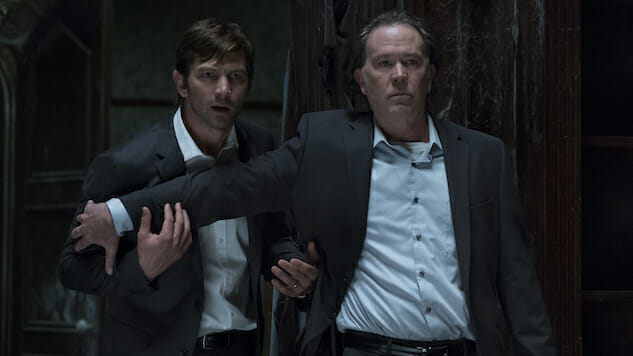
Created by: Mike Flanagan
Stars: Michiel Huisman, Carla Gugino, Timothy Hutton, Elizabeth Reaser, Annabeth Gish, Oliver Jackson-Cohen, Kate Siegel, Victoria Pedretti
Original Network: Netflix
The aesthetic of The Haunting of Hill House makes it work not only as horror TV, but also as a deft adaptation of Shirley Jackson’s classic novel. The monsters, ghosts, and things that go bump on the wall are off-screen, barely shown, or obscured by shadow. The series even goes back to some of the first film adaptation’s decisions, in terms of camera movement and shot design, in order to develop uneasiness and inconsistency. Well, maybe “inconsistency” is the wrong word. The only thing that feels truly inconsistent while watching it is your mind: You’re constantly wary of being tricked, but the construction of its scenes often gets you anyway. By embracing the squirm—and the time necessary to get us to squirm rather than jump—The Haunting of Hill House is great at creating troubling scenarios, and even better about letting us marinate in them. —Jacob Oller
8. The Terror
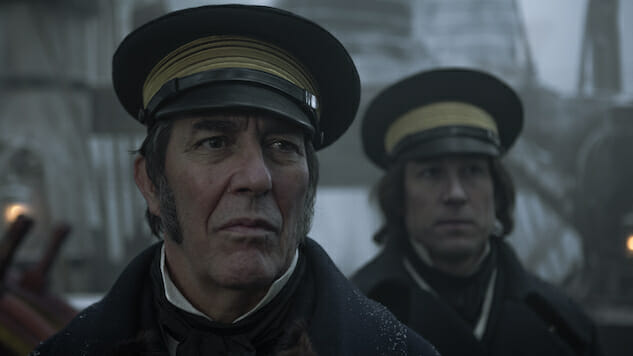
Created by: David Kajganich
Stars: Jared Harris, Tobias Menzies, Paul Ready, Ian Hart, Ciarán Hinds
Original Network: AMC
Serial television addicts have become more than accustomed to “morally gray, mostly white men making poor decisions when the chips are down” plotlines since The Sopranos kicked off the antihero craze more than 20 years ago. The first season of the horror anthology series The Terror, which tells the tale of the slow and grisly end that comes to the crews of two British ships—Sir John Franklin’s Erebus and Captain Francis Crozier’s Terror—on a failed mission to navigate the Northwest Passage in 1846, traffics in this trope, but with a twist. The poor decisions here, in a terrifying frozen wasteland with no food sources and sudden and mysterious deaths lurking around every ice block, seem to be the only natural course—even as the supernatural comes to bear in those decisions, and as more and more of the crew and its officers go mad from the extremes about them that want them dead. Nearly every performance here is a standout, including those from Mad Men alumnus Jared Harris, as Crozier, and Game of Thrones veterans Tobias Menzies, as Captain James Fitzjames, and Ciarán Hinds, as Franklin. The Terror is a series that rewards patience while remaining knuckle-whitening the whole way through.
Infamy is the evocative, chilling second season of AMC’s anthology series in which showrunner Alexander Woo and his team have crafted a hell of a ghost story (or, more accurately, a kaidan), continuing the first season’s knack for mixing together mythology, ambiguity, genre, and striking imagery to chill the bones. If you want a good scare, you’re in great shape. The bad news—and it’s only bad news if you don’t have it in you to confront the horrors of the real world—is that no ghost could be more unsettling than the historical and depressingly everyday nightmares that The Terror has in store. In this case, the historical event being explored is an American (and sadly timely) one: the internment of Japanese Americans in camps during the Second World War.
If the body horror or creeping dead don’t turn your stomach sour, the reminder of the ugliness of the past (and the present) surely will. But if you’re ready and willing to experience it, the rewards are considerable. It’s captivating, provoking and complex, as eager to earn your stunned silence as it is to send you pushing back from the television in revulsion. Most importantly, it never sacrifices story and especially character in pursuit of those reactions. The Terror might use terror (and its cousin, dread) to unlock doors in your stomach and psyche, but it’s not a parlor trick. There are horrors of worlds beyond ours, and horrors of our own making. By confronting its characters with both, Woo and AMC make the latter much, much harder to ignore. —John Maher and Allison Shoemaker
7. Evil

Created by: Robert and Michelle King
Stars: Katja Herbers, Mike Colter, Aasif Mandvi, Michael Emerson
Network: Paramount+
I’m not sure CBS initially realized Evil was on its network for Season 1 because Oh. My. God. I can’t believe the same network that airs like 50 different versions of NCIS would air this meditation on evil from the same people who brought you The Good Wife. It’s intense. And scary. And now, it’s on Paramount+ and freed from network constraints while maintaining its intriguing pull. Kristen Bouchard (Katja Herbers) is a forensic psychologist who becomes something of a believer when she meets priest-in-training David Acosta (Mike Colter) and tech expert Ben (Aasif Mandvi) and they begin to investigate the inexplicable. The always creepy (in the best way) Michael Emerson is also on hand as Leland Townsend, a mysterious character who epitomize the title of the series. Truly, my only complaint about this drama, which gets better with each passing episode, is that may be too creepy for me. The show produces the kind of scares that stay with you long after the lights go out. —Amy Amatangelo
6. Buffy the Vampire Slayer / Angel
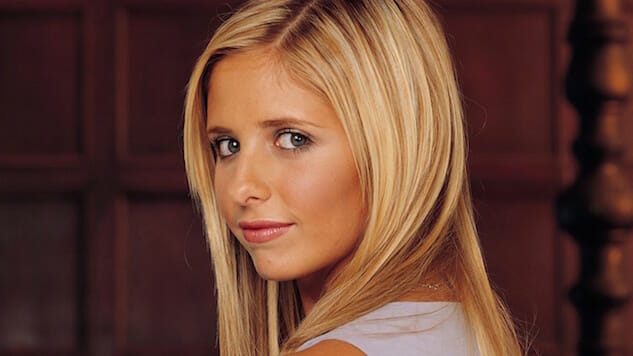
Created by: Joss Whedon
Stars: Sarah Michelle Gellar, Nicholas Brendon, Alyson Hannigan, Charisma Carpenter, David Boreanaz, Seth Green, Marc Blucas, Emma Caulfield, Michelle Trachtenberg, Amber Benson, James Marsters, Anthony Stewart Head
Original Networks: The WB, UPN
Watch Buffy on Hulu Watch Angel on Hulu
Buffy the Vampire Slayer had it all: romance, drama, tragedy, suspense. The show took the teen-soap formula and elevated it to an art. It was a unique combination of tragic romance, apocalyptic fantasy, and the clincher: emotional realism. It also featured the most serious and realistic depiction of human loss ever witnessed on the small screen (in “The Body” dealing with the death of Buffy’s mom by natural causes). Humor? The writers understood the campy sheen that must accompany any show named Buffy. They also knew how to use snappy dialogue and uncomfortable situations to full effect. Complex characters? You’d be hard pressed to find another program that had the same range and consistency of character development. Everyone matured (or devolved) at his or her own realistic rate. As some feminist writers have argued, TV had never before seen the complexity of relationships among women that you saw with the likes of Buffy, Willow, Joyce, and Dawn. Plot? The writers employed elaborate multi-episode, multi-season story arcs. People and events of the past always had a way of popping back up, the way they do in real life. Philosophy? Series creator Joss Whedon was all about the meta, the ideas and story behind the story. He succeeded, creating a WB/UPN show that bears closer resemblance to the works of Dostoevsky and Kafka than 90210 or Dawson’s Creek. —Tim Regan-Porter
While watching Buffy straight through for the first time, I took a break after the fourth season to watch its spin-off, Angel. I’ve loved it every bit as much as Joss Whedon’s first series, especially all the half-demon as illegal alien motifs. If Boreanaz was a little too irritatingly brooding in Buffy he’s given more depth as the lead. Joss Whedon may have moved on to big-screen blockbusters, but his TV shows found that overlap of “smart” and “entertaining” every time. —Josh Jackson
5. Twin Peaks
Created by: David Lynch, Mark Frost
Stars: Kyle MacLachlan, Michael Ontkean, Mädchen Amick, Dana Ashbrook, Richard Beymer, Lara Flynn Boyle, Joan Chen, Eric Da Re, Sherilyn Fenn
Original Network: ABC
At its heart, Twin Peaks is a detective story, with Dale Cooper (Kyle Maclachan), a stalwart, by-the-book FBI agent, descending upon the small logging town of Twin Peaks to investigate the murder of a young woman. But since this was a TV series conceived using the weird and wonderful visions of David Lynch, it wound up being so much more. Like its nearest antecedent, Blue Velvet, it explores the weirdness that lies beneath the surface of Anytown, U.S.A., including a lot of soap opera-like psychosexual drama and assorted oddball characters like The Log Lady (Catherine Coulson) and agoraphobic Harold Smith (Lenny Von Dohlen). The horror of the show came in with the supernatural underpinnings of this storyline, with the killer of Laura Palmer (Sheryl Lee) potentially being an otherworldly force that goes by the name of Bob. Through Lynch’s lens and through the guise of actor Frank Silva, that spirit haunted every last scene in the show, no matter how outlandish and far-reaching it got. With the help of Angelo Badalamenti’s haunting score and the atmosphere created by the set designers, you spent the entirety of the two seasons waiting for something terrible to happen to everyone on screen. And it only made those moments—when things did go sour—feel that much worse. Twin Peaks: The Return premiered on Showtime in 2017, but its wild surrealism and resistance to narrative confirm the visionary nature of Lynch’s original. —Robert Ham
4. Are You Afraid of the Dark?
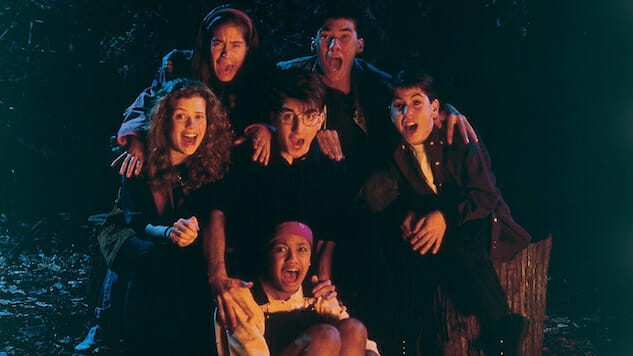
Created by: D. J. MacHale, Ned Kandel
Stars: Ross Hull, Raine Pare-Coull, Jodie Resther, Jason Alisharan, Daniel DeSanto, JoAnna Garcia, Rachel Blanchard, Nathaniel Moreau, Codie Wilbee, Jacob Tierney
Original Network: Nickelodeon
The central conceit of Are You Afraid of the Dark?—sneaking off to a forest clearing to tell scary stories and throw magical powder on the fire as a member of the Midnight Society—was more or less the coolest activity that my 9-year-old self could imagine myself or any other child engaging in. Although it was predominantly aimed at the adolescent viewership of Nickelodeon, Are You Afraid of the Dark? captured the perfect tone of wonder and terror. Certain episodes, such as the oft-cited “Tale of the Midnight Madness,” with its blood-curdling Nosferatu vampire, are straight-up horror, that likely sent kids running out of the room. Although most of the stories do get a happy ending, it certainly wasn’t universal—just ask the guy in “The Tale of the Pinball Wizard,” who is doomed to spend eternity trapped inside a pinball machine until he’s killed. Like Tales From the Crypt, however, the episodes I tend to remember best are those ones featuring a revolving door of goofy guest actors. Who could forget Gilbert Gottfried as the afterlife bureaucrat in “The Tale of Station 109.1,” or the bizarrely hilarious performance of Bobcat Goldthwait screaming his way through “The Tale of the Final Wish” while playing “The Sandman”? —Jim Vorel
3. The X-Files
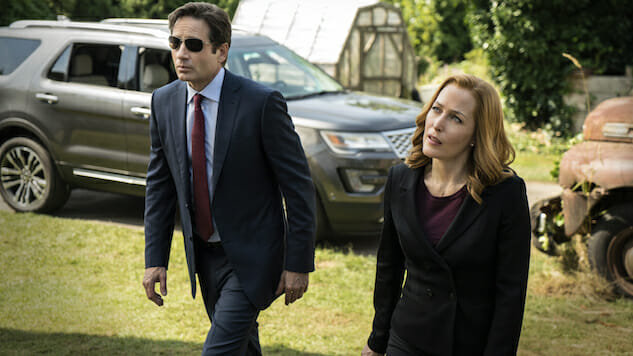
Created by: Chris Carter
Stars: David Duchovny, Gillian Anderson, Robert Patrick, Annabeth Gish, Mitch Pileggi
Original Network: Fox
Today, after more than 200 episodes, two feature films, a spinoff and two-plus decades of history, being an X-Files fan is a lot like being a fan of a long-running comic book. Namely, there are peaks and valleys in writing quality, the continuity becomes a convoluted mess if you stop to think about it for even a second and—in spite of whatever monumental changes occur—the story always seems to revert back to a certain status quo. And yet there’s no question that what initially started as creator Chris Carter’s take on Kolchak: The Night Stalker has since become an indelible cornerstone in the history of television. Long before the likes of Buffy or Lost, The X-Files legitimatized the viability of serialized genre storytelling. Alongside stand-alone case episodes, the series incorporated ongoing arcs involving vast government conspiracies, alien invasions and the mystery surrounding a missing loved one.
Perhaps more impressive than its long-term thinking, however, was the flexible tone the creative team established as a template for its various installments. Episodes could be scary, funny, surreal, emotional—sometimes all in the same hour. In the world of The X-Files, a horror-filled hour centered on deformed cannibals could fit right alongside a hilarious take-off on Cops. Writing and directing aside, what really tied everything together and made it pop was the legendary chemistry between David Duchovny’s Fox Mulder and Gillian Anderson’s Dana Scully. At the risk of courting controversy, those who simply reduce the two’s dynamic to a simple “will they, won’t they?” are being somewhat reductive. What Mulder and Scully had was more than simple sexual tension; it was a loving and respectful partnership between two intelligent individuals whose differing attributes perfectly complemented one another. It assured us that, despite all the monsters and aliens at play, there was an inherent humanity rooted firmly at the show’s center. —Mark Rozeman
2. Hannibal
Created by: Bryan Fuller
Stars: Mads Mikkelsen, Caroline Dhavernas, Hugh Dancy
Original Network: NBC
I’ve said it before, and I’ll say it again; Hannibal airing on a broadcast network was nothing short of a minor miracle. After a stellar inaugural year, Bryan Fuller and company dared to up the stakes for their second go-around, taking major creative risks in the process. These risks came in the form of (among other things) sealing the protagonist in jail for a third of the run, killing off a major character, and ending the season with what I can only describe as the visual equivalent of a mic drop. Even in its weaker moments, the show always offered something memorable, whether it be an impressive visual, or an intense dialogue exchange. And while some viewers no doubt came to Hannibal purely for its inventive, if highly gruesome imagery (there’s certainly that in spades), chances are they ended up staying for the compelling writing, hypnotic performances, and luscious, evocative cinematography. —Mark Rozeman
1. The Twilight Zone

Created by: Rod Serling
Stars: Rod Serling
Original Network: CBS
It is, in the estimation of any sane person, one of the greatest science fiction series of all time without a doubt, with its myriad episodes about technology, aliens, space travel, etc. But The Twilight Zone also plumbed the depths of the human psyche, madness and damnation with great regularity, in the same spirit as creator Rod Serling’s later series, Night Gallery. Ultimately, The Twilight Zone is indispensable to both sci-fi and horror. Its moralistic playlets so often have the tone of dark, Grimm Brothers fables for the rocket age of the ‘50s and ‘60s, urban legends that have left an indelible mark on the macabre side of our pop culture consciousness. What else can one call an episode such as “Living Doll,” wherein a confounded, asshole Telly Savalas is threatened, stalked and ultimately killed by his abused daughter’s vindictive doll, Talky Tina? Or “The Invaders,” about a lonely woman in a farmhouse who is menaced by invaders from outer space in an episode almost entirely without dialog? Taken on its own, a piece of television such as “The Invaders” almost shares more in common with “old dark house” horror films or the slashers that would arrive 20 years later than an entry in a sci-fi anthology. —Jim Vorel
For all the latest TV news, reviews, lists and features, follow @Paste_TV.
